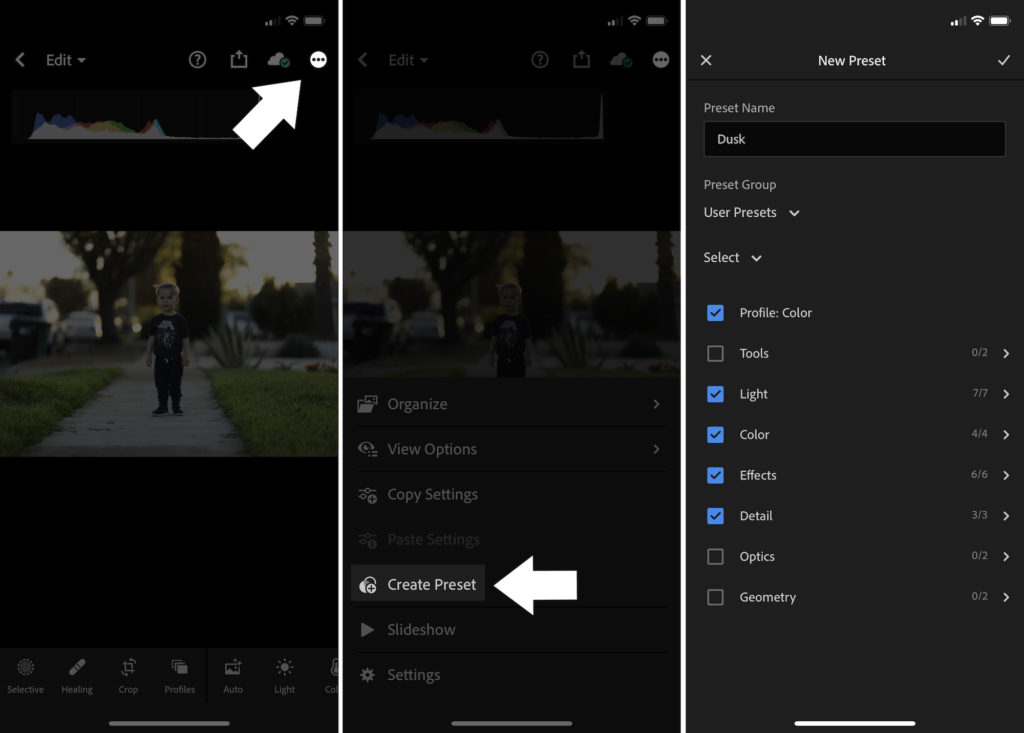
A long press will bring up the menu, which includes a “copy settings” option. Once you open Lightroom Mobile, the Presets collection will have your image as well as all the edits made to it. You could even make a graphic with the preset name to use as the base image if you plan on keeping a ton of presets on-hand.

It makes sense to use visually distinctive photos for each preset or set of edits you want to keep on hand so it’s easy to tell which is which. Once that image is added to the “Presets” collection, it will sync up to Lightroom mobile. Now, find an image in your library and apply the chosen preset or adjustments. The collection I created on the desktop now shows up on the mobile app after syncing. Once you’re syncing, create a collection called “presets.” I named mine “!presets” so it would show up first an in alphabetical list. In order for this to work, you obviously need a Creative Cloud account so you can sync images and collections between the desktop and mobile versions of the software. Create a collection of images with presets applied in the desktop version of Lightroom. Recently, however, a rep from Adobe shared a clever trick to get all of those presets working on the mobile version, and it’s really simple. One feature that’s not officially supported however, is the use of custom and pre-made presets, like those from VSCO or Mastin Labs. Lightroom Mobile has come a long way since its start, and it now includes the vast majority of the features you expect to find in the desktop version. This image was taken on an iPhone but has been edited using a custom preset based on one of the VSCO presets.


 0 kommentar(er)
0 kommentar(er)
